Taking Kayaking Lessons for the Coast to Coast
If you are serious about wanting to do the Coast to Coast Race within the next few years (or months) then you’ll want to get your Grade 2 Kayak Course booked as soon as possible. All competitors are required to have a grade 2 kayaking skills certificate to enter the race, so the sooner you can gain your certificate, the better.
When Should You Start Taking Kayaking Lessons if You’re Training for the Coast to Coast Race?
As a kayak coach myself, you might expect me to suggest taking lessons from the very first time you sit in a kayak. But, I actually don’t think this is the best time to invest in lessons.
When you first sit in a kayak, you have a lot you can figure out on your own. Balance, steering with your rudder, paddling coordination, etc. Having an instructor in your ear from the very first moment you sit in a boat is actually not that helpful. It just clutters your brain and makes it hard to concentrate.
Instead, I suggest you spend your first couple of sessions with a friend, or at a kayak club. There is no need to take things too seriously at this stage or worry too much about your technique. You just need to get a feel for paddling, get relaxed, and enjoy it!
Once you feel relaxed and comfortable paddling on flatwater, you are now ready to invest in some quality kayaking lessons. And if you plan to do the Coast to Coast race, then your Grade 2 Certificate Course is the best place to receive your first professional kayaking lessons.
When Should You Do Your Grade 2 Certificate Course for the Coast to Coast?
While you might feel like delaying your Grade 2 Certificate Course in order to get more preparation time on flatwater, in my experience, this will NOT help you much.
Aside from getting comfortable sitting in a boat and using a paddle, there isn’t a lot you can do on flatwater that will have a significant impact on your performance during your course.
What will actually help you, is ensuring you have plenty of time after your course to practice and work on everything you learned during your course lessons.
Plus, if you do not gain your certificate straight away, then having plenty of time left available before your Coast to Coast race means getting reassessed will not be a big deal.
If you delay your course to a later date, then you are simply reducing the amount of time that you can spend practising your river kayaking skills prior to the Coast to Coast race – and this is not what you need.
So, make sure to book in to do your Grade 2 Certificate Course as soon as possible!
Is It Worth Doing More Kayak Lessons After Your Grade 2 Certificate Course?
Yes. Kayaking on grade 2 rivers is harder than most people expect. You are trying to learn a completely new set of skills, unlike any other sport. And once you learn the fundamentals, I guarantee you’ll want to learn more in order to feel fully confident at your first Coast to Coast race.
The Coast to Coast officially recommends first-time competitors budget for 6 days of professional instruction on grade 2 whitewater, plus a Guided Trip down the river prior to race weekend.
In my experience teaching hundreds of beginners, nearly everyone wants more lessons with me after their 4-day Grade 2 Certificate Course is complete.
You may only have a few months left to prepare for Coast to Coast, and taking more kayaking lessons guarantees you’ll be taught what you need to know, and will give you the best chance at maximising your investment in time and money.
At Canterbury Kayaking, we offer a 3-day Skills Improvement Course for people who have done their grade 2 kayak course and now want to develop their kayaking skills further. For the reasons I have talked about, this course is extremely popular.
For paddlers on a budget, I recommend skipping the flat water lessons before your grade 2 course and investing that money in more coaching after your grade 2 course.
How To Get the Most Value Out of Kayak Courses
There are a couple of things you can do as a learner to gain the most from your time and money invested in kayaking courses and lessons.
Great instruction is all about clear communication and having a good relationship between coach and athlete.
The first thing I suggest you do is turn up to your lesson with a good idea of why you are taking the course or lesson(s). Make sure you can clearly explain to your coach what you hope to learn or improve on, and what your long-term goals are.
Throughout a lesson, remember that your coach is a real person just like you. Appreciating why your coach does what they do can be helpful if you want to get the most out of your relationship with your coach.
Understand that nobody is getting rich from kayak coaching in New Zealand, it’s tough on our bodies and takes up most of our weekends. We do it because we love helping people achieve their dreams.
I personally get great energy and motivation from seeing my paddlers improve. But more importantly, I love seeing the positive impact this improvement has on my clients’ sense of accomplishment.
If I can see you are enjoying the learning process, are gaining satisfaction out of your improvement, and are getting closer to achieving your long-term goals, then I draw loads of energy from that.
So, think about how you can be a pleasure to teach, and your instructor will want to go the extra mile for you.
Lastly, be prepared to not be very good at river paddling straight away. Trust the learning process. You will improve!


Leave a comment